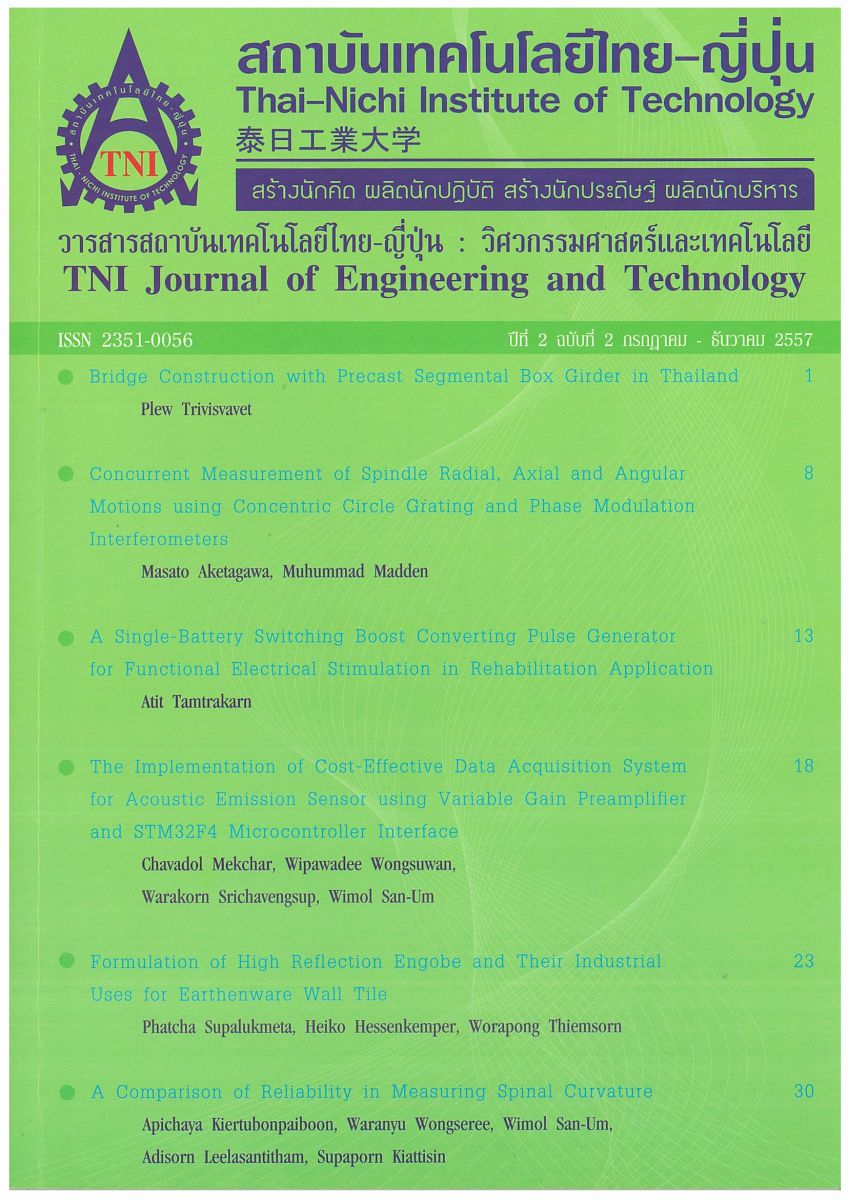A Cost-Effective Hardware True-Random-Bit Generator using High-Dimensional Autonomous Hyperjerk Chaotic System
Main Article Content
Abstract
With the rapid advancement of Information and Communication Technology (ICT) in recent years, information security has become a major issue under consideration for both research and practical applications. Cryptography has therefore been utilized as a solution for information security where a True-Random-Bit (TRB) generator is necessary in confidential key generation or in an intrinsic algorithm to the computation. A number of TRB generators have been reported based on stochastic systems, involving resistor noise amplification, digital clock jitter noises, or a heuristic source of randomness. The use of chaotic systems has also been suggested recently for hardware TRB generators owing to a well-defined deterministic circuits and systems. This paper presents a new hardware TRB generator
using a high-dimensional autonomous hyperjerk system. The realization of high-dimensional hyperjerk system provides multi-output signal depending on the dimension degree, and offers very simple circuit implementations through a series connection of integrators with a single nonlinearity. The multi-output chaotic signals are digitized prior to the digit-combination process, yielding a 20,000-bit sequence. The statistical tests that prove the randomness are achieved by various standard test methods such as Chi-square goodness-of-fit test, Gap test, Poker test, Coupon-collectors test, Permutation test, Run test for randomness, Wilcoxon signed rank test, Sign test, Jarque-Bera test and Lilliefors test. This work offers not only a cost-effective hardware implementation, but also high-degree of randomness for applications in cryptography used in information security.
Article Details
Article Accepting Policy
The editorial board of Thai-Nichi Institute of Technology is pleased to receive articles from lecturers and experts in the fields of engineering and technology written in Thai or English. The academic work submitted for publication must not be published in any other publication before and must not be under consideration of other journal submissions. Therefore, those interested in participating in the dissemination of work and knowledge can submit their article to the editorial board for further submission to the screening committee to consider publishing in the journal. The articles that can be published include solely research articles. Interested persons can prepare their articles by reviewing recommendations for article authors.
Copyright infringement is solely the responsibility of the author(s) of the article. Articles that have been published must be screened and reviewed for quality from qualified experts approved by the editorial board.
The text that appears within each article published in this research journal is a personal opinion of each author, nothing related to Thai-Nichi Institute of Technology, and other faculty members in the institution in any way. Responsibilities and accuracy for the content of each article are owned by each author. If there is any mistake, each author will be responsible for his/her own article(s).
The editorial board reserves the right not to bring any content, views or comments of articles in the Journal of Thai-Nichi Institute of Technology to publish before receiving permission from the authorized author(s) in writing. The published work is the copyright of the Journal of Thai-Nichi Institute of Technology.
References
M. Drutarovsk and P. Galajda, “Chaos based true random number generator embedded in a mixed-signal recon-figurable hardware,” Journal of Electrical Engineering, Vol. 57, pp. 218-225, April 2006.
AIS 31, “Functionality classes and evaluation methodol-ogy for true (physical) random number generators ver 3.1,” Bundesmat fur Sicherheir in der Information technik (BSI), Bon, Germany, September 2001.
M. E. Yalcin, J. K. Suykens, and J. Vandewalle, “True random bit generation from a double scroll attractor,” IEEE Transactions on Circuits and Systems I: Funda-mental Theory and Applications, Vol. 51, pp. 1395-1404, July 2004.
M. Bucci, L. Germani, R. Luzzi, A. Trifiletti, and M. aranouovo, “A high-speed oscillator-based truly random number source for cryptographic applications on a smart card IC,” IEEE Transactions on Computers, Vol. 52, pp. 403-409, April 2003.
M. E. Yalcin, J. K. Suykens, and J. Vandewalle, “True random bit generation from a double scroll attractor,” IEEE Transactions on Circuits and Systems I: Funda-mental Theory and Applications, Vol. 51, pp. 1395-1404, July 2004.
G. Gonnet. Repeating Time Test for U(0,1) Random Number Generators. Technical report, Informatik, ETH, Zurich, May 2003. URL https://www.inf.ethz.ch/ personal/gonnet/RepetitionTest.html.
G. Marsaglia. The diehard test suite, 2003. URL https://www.csis.hku.hk/~diehard/.


